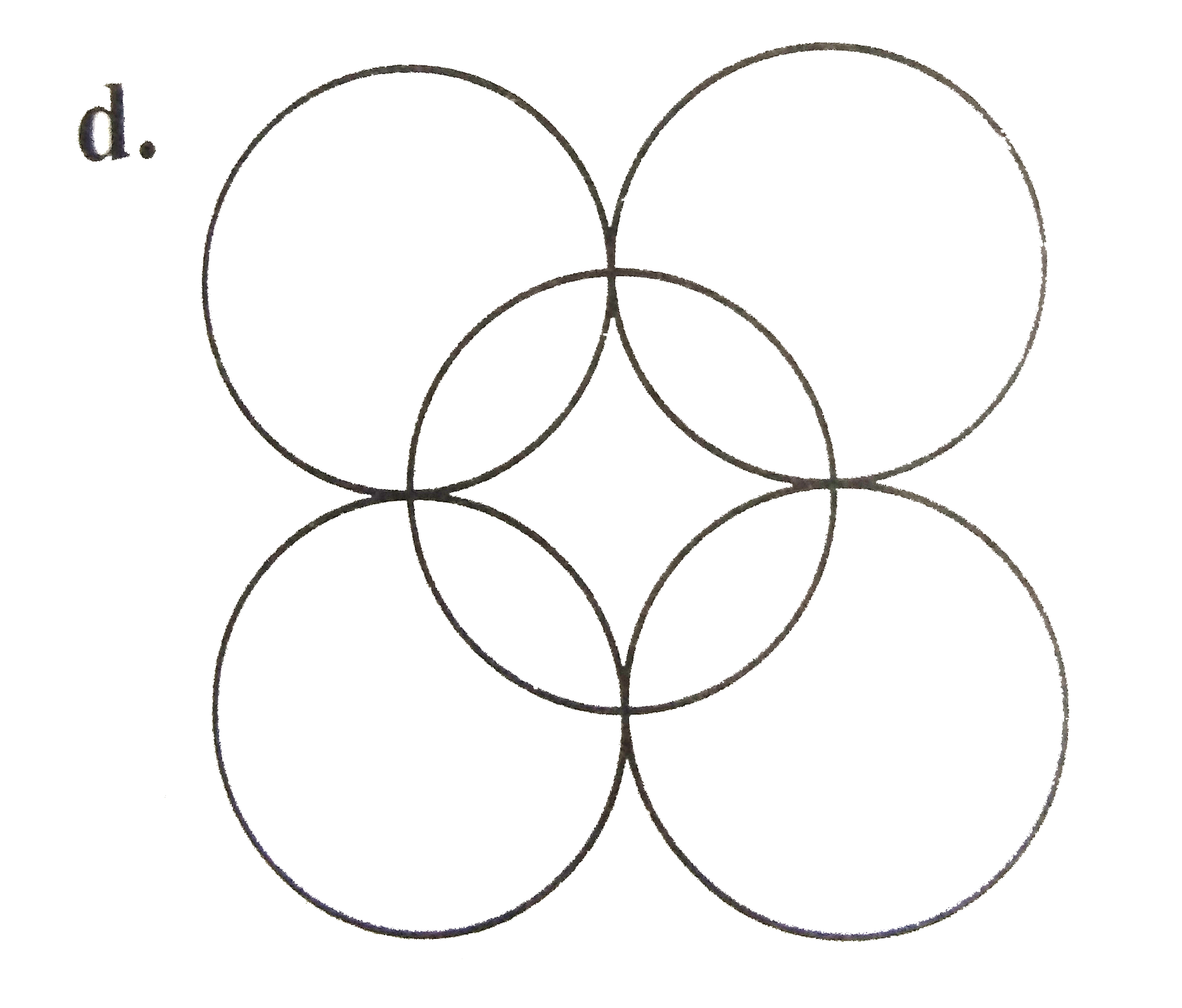Complete Solutions to Exercises (Linked Comprehension) of chapter SOLID STATE of Class 12 book with complete answers and questions
| Class 12 | CHEMISTRY |
| Chapter | SOLID STATE |
| CENGAGE CHEMISTRY | Exercises (Linked Comprehension) |
| Number Of Questions | 13 |
| Academic Year | 2023-24 |
If calcium crystallizes in `bc c` arrangement and the radius of `Ca` atom is `96 pm`, then the volume of unit cell of `Ca` is
View SolutionThe number of unit cells in the `Ca` atom lies on the surface of a cubic crystal that is `1.0 cm` in length is
View SolutionThe number of unit cells in the `Ca` atom lies on the surface of a cubic crystal that is `1.0 cm` in length is
View SolutionThe `"OLIVINE"` series of minerals consists of crystal in which `Fe^(2+)` and `Mg^(2+)` ions may substitute for each other causing susbstitutional impurity defects without changing the volume of unit cell. In `"OLIVINE"` series of minerals, `O^(2-)` ions exist as fcc with `Si^(4+)` occupying one-fourth of `OVs` and divalent metal ions occupying one-fourth of `OVs` and divalent metal ions occupying one-fourth of `TVs`. The density of "forsterite" (magnesium silicate) is `3.21 g cm^(-3)` land that of "fayalite" (ferrous silicate) is `4.34 g cm^(-3)`.
The formula of "fayalite mineral" is
View SolutionThe `"OLIVINE"` series of minerals consists of crystal in which `Fe^(2+)` and `Mg^(2+)` ions may substitute for each other causing susbstitutional impurity defects without changing the volume of unit cell. In `"OLIVINE"` series of minerals, `O^(2-)` ions exist as fcc with `Si^(4+)` occupying one-fourth of `OVs` and divalent metal ions occupying one-fourth of `OVs` and divalent metal ions occupying one-fourth of `TVs`. The density of "forsterite" (magnesium silicate) is `3.21 g cm^(-3)` land that of "fayalite" (ferrous silicate) is `4.34 g cm^(-3)`.
If in "forsterite mineral" bivalent `Mg^(2+)` ions are to be replaced by unipositive `Na^(o+)` ions, and if `Na^(o+)` ions are occupying half of `TV_(s)` in`fcc` lattice, the arrangement of rest of the constituents is kept same, then the formula of the new solid is:
View Solution`AX,AY,BX`, and `BY` have rock salt type structure with following internuclear distances:
`|{:("Salt","Anion-anion","Cation-anion"),(,"distance in"Å,"distance in"Å),(AX,2.40,1.70),(AY,1.63,1.15),(BX,2.66,1.88),(By,2.09,1.48):}|`
Ionic radii of `A^(o+)` and `B^(o+)`, respectively, are
a.`0.35` and `0.68 Å`
b.`0.68` and `0.35 Å`
c.`1.20` and `0.80 Å`
d.`0.80` and `1.20 Å`
View Solution`AX,AY,BX`, and `BY` have rock salt type structure with following internuclear distances:
`|{:("Salt","Anion-anion","Cation-anion"),(,"distance in"Å,"distance in"Å),(AX,2.40,1.70),(AY,1.63,1.15),(BX,2.66,1.88),(By,2.09,1.48):}|`
Ionic radii of `X^(o+)` and `Y^(Θ)`, respectively, are
View Solution`AX,AY,BX`, and `BY` have rock salt type structure with following internuclear distances:
`|{:("Salt","Anion-anion","Cation-anion"),(,"distance in"Å,"distance in"Å),(AX,2.40,1.70),(AY,1.63,1.15),(BX,2.66,1.88),(By,2.09,1.48):}|`
The structure given below is of

(a)`AX`
(b)`AY, BX`
(c)`AY, BX , BY`
(d)`AY, BX , BY and KCI`
View Solution`AX,AY,BX`, and `BY` have rock salt type structure with following internuclear distances:
`|{:("Salt","Anion-anion","Cation-anion"),(,"distance in"Å,"distance in"Å),(AX,2.40,1.70),(AY,1.63,1.15),(BX,2.66,1.88),(By,2.09,1.48):}|`
Which of the following structure is, respectively, by `Ax`?
(a)
(b)
(c)
(d)
View Solution`AX,AY,BX`, and `BY` have rock salt type structure with following internuclear distances:
`|{:("Salt","Anion-anion","Cation-anion"),(,"distance in"Å,"distance in"Å),(AX,2.40,1.70),(AY,1.63,1.15),(BX,2.66,1.88),(By,2.09,1.48):}|`
A salt `MY` crystallizes in the `CsCl` structure. The anions at the corners touch each other and cation is in the centre. The radius ratio `(r_(o+)//r_(Θ))` for this structure is
View SolutionIn a unit cell, atoms `(A)` are present at all corner lattices, `(B)` are present at alternate faces and all edge centres. Atoms `(C)` are present at face centres left from `(B)` and one at each body diagonal at disntance of `1//4th` of body diagonal from corner.
Formula of given solid is
View SolutionIn a unit cell, atoms `(A)` are present at all corner lattices, `(B)` are present at alternate faces and all edge centres. Atoms `(C)` are present at face centres left from `(B)` and one at each body diagonal at disntance of `1//4th` of body diagonal from corner.
A tetrad axis is passed from the given unit cell and all the atoms touching the axis are removed. The possible formula of the compound left is
View SolutionIn a unit cell, atoms `(A)` are present at all corner lattices, `(B)` are present at alternate faces and all edge centres. Atoms `(C)` are present at face centres left from `(B)` and one at each body diagonal at disntance of `1//4th` of body diagonal from corner.
Total fraction of voids occupied are
View Solution
Exercises (Linked Comprehension) questions and complete solutions for chapter SOLID STATE of CENGAGE CHEMISTRY (ENGLISH) of Class 12
All Exercises from CENGAGE CHEMISTRY Class 12 CHEMISTRY SOLID STATE
- Ex 1.1 (Objective)
- Ex 1.1 (Subjective)
- Ex 1.2 (Objective)
- Ex 1.2 (Subjective)
- Exercises (Archives ) Assertion-Reasoning
- Exercises (Archives ) Interger
- Exercises (Archives ) Linked Comprehension
- Exercises (Archives ) Multiple Correct
- Exercises (Archives ) Single Correct
- Exercises (Archives ) Subjective
- Exercises (Assertion-Reasoning)
- Exercises (Fill In The Blanks)
- Exercises (Interger)
- Exercises (Linked Comprehension)
- Exercises (Multiple Correct)
- Exercises (Single Correct)
- Exercises (True/False)
- Illustration
- Solved Examples